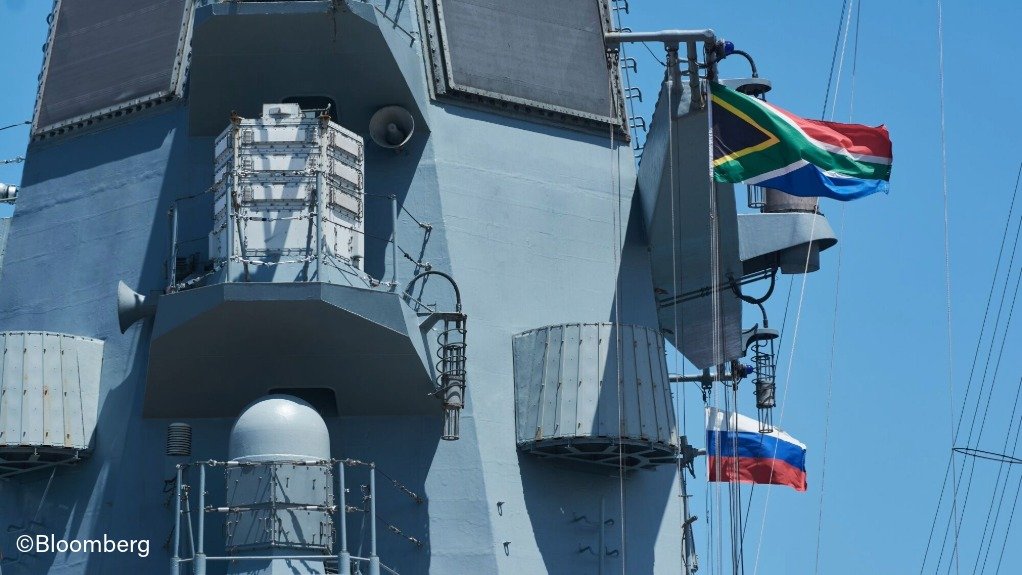South African authorities said they are investigating how electronic equipment made in the country ended up in Russian drones used to attack Ukraine.
The part in question is a laser range finder made by Lightware Optoelectronics, which is based on the outskirts of Pretoria. It can be used to measure distances and trigger detonation, Vladyslav Vlasiuk, Ukraine’s special envoy for sanctions, said in a social media post.
It’s unclear how Russia obtained the equipment, which isn’t designed for military use, Lightware said in a response to questions this week. It blamed “unscrupulous” purchasers. The range finder was named among components that Ukraine’s intelligence services said on their Telegram channel were discovered in Russian drones.
Under South African law a company is prohibited from exporting arms to a country engaged in active conflict without the permission of the government’s National Conventional Arms Control Committee, or NCACC.
“The entity in question is not registered to trade with munitions and dual-use goods and technologies,” Sipho Mashaba, the acting director for conventional arms control at the NCACC, said in an emailed response to questions. “This matter will be referred to the inspectors who will visit the premises of the entity to establish the scope of their business as well as the application.”
The technology built into Lightware’s sensors is used in driverless cars and in applications ranging from monitoring ore movements at mines to counting endangered wildlife. The company has reduced the size and weight of the sensors, making it easier to deploy in drones.
The sensor was found in a Russian Garpiya-A1 drone, a long-range so-called suicide drone that explodes when it reaches its target, Vlasiuk said this week.
Lightware said there was no need to seek export permits because the equipment is only for civilian use. “We do not fall under the ambit of the NCACC,” Nadia Nilsen, the company’s chief executive officer, said by email. “It appears an unscrupulous operator, without our knowledge, purchased our sensors elsewhere and used them unlawfully in Russia.”
Following its full-scale invasion of Ukraine in February 2022, Russia sought to ramp up drone production. Documents seen by Bloomberg earlier this year detailed how Moscow used ties with Beijing, for example, to skirt sanctions and gather the know-how and capability to build more of them. Russia has increased its aerial drone barrages in recent months.
President Cyril Ramaphosa led an African effort to mediate in the conflict between Russia and Ukraine and continues to push for a settlement. South Africa is also trying to repair strained relations with the US after the Trump administration criticised the country’s relations with Moscow and Tehran.
In February 2023, the US was angered by South Africa holding military exercises with the Russian navy. A few months later, Reuben Brigety, then US ambassador to South Africa, accused the country of shipping arms to Russia. South Africa carried out a judicial probe that found no evidence to substantiate Brigety’s claims.
After Trump earlier this year falsely accused South Africa of perpetrating a genocide against White people, the US imposed 30% trade tariffs on many imports, the highest for any sub-Saharan African nation, slashed aid and some of its officials boycotted Group of 20 meetings hosted by the nation.
With the discovery of the drone part, “certain people are going to jump up and down,” said Helmoed-Roemer Heitman, a Cape Town-based military analyst. “It is embarrassing. It’s a murky sort of area.”
South Africa’s government communications department didn’t respond to a request for comment.
In his post on X in August, Ukrainian envoy Vlasiuk described the range finder as being an SF-20/B, a model that Lightware CEO Nilsen said was discontinued in 2020. On Telegram, the intelligence service listed it as an SF-20 range finder. Lightware sells the SF-20/C range finder on its website for $279.
Lightware doesn’t sell its equipment to embargoed countries and placed Russia and Ukraine on that list when the conflict escalated between the countries in 2022, Nilsen said. The company, though, can’t track the use of the sensors once they have been sold by distributors.
“We use end-user declarations to control where and to whom our products are sold,” Nilsen said. “We are sadly unable to regulate how this sensor can be applied downstream.”
Lightware’s plant is situated in a nondescript office park in Centurion on the edge of the capital, Pretoria. It shares a building with a reproductive health nonprofit, a credit ratings agency and a coal company.
The company was founded in 2011 and has attracted investment from entities including Sanari Capital Ltd., a Johannesburg-based private equity firm that invested R25-million in Lightware in 2020.
We are “profoundly disturbed to learn that one of the technologies we support has been found in such a nefarious application,” said Samantha Pokroy, Sanari Capital’s CEO. “It is deeply unfortunate that component manufacturers lack the means to fully trace the end use of their products.”
EMAIL THIS ARTICLE SAVE THIS ARTICLE FEEDBACK
To subscribe email subscriptions@creamermedia.co.za or click here
To advertise email advertising@creamermedia.co.za or click here











